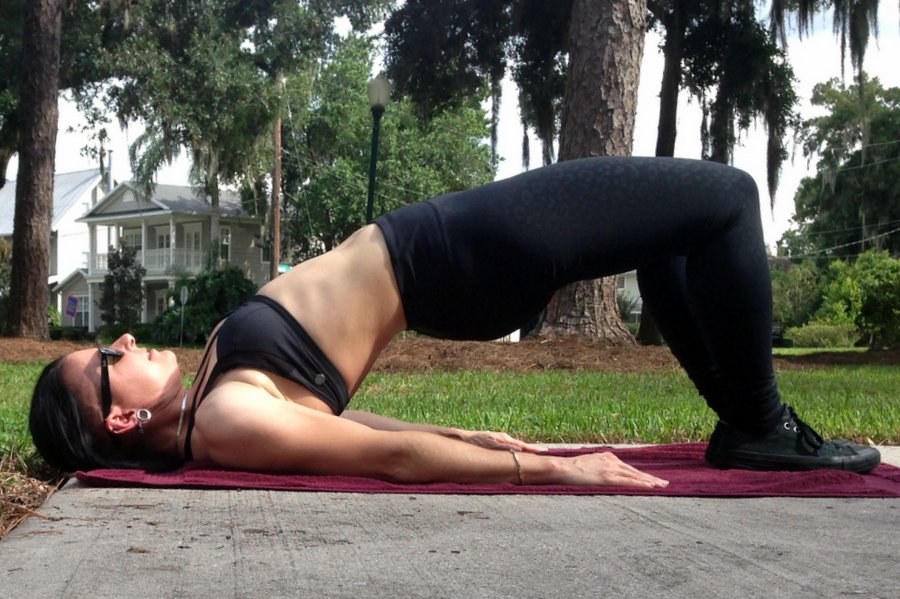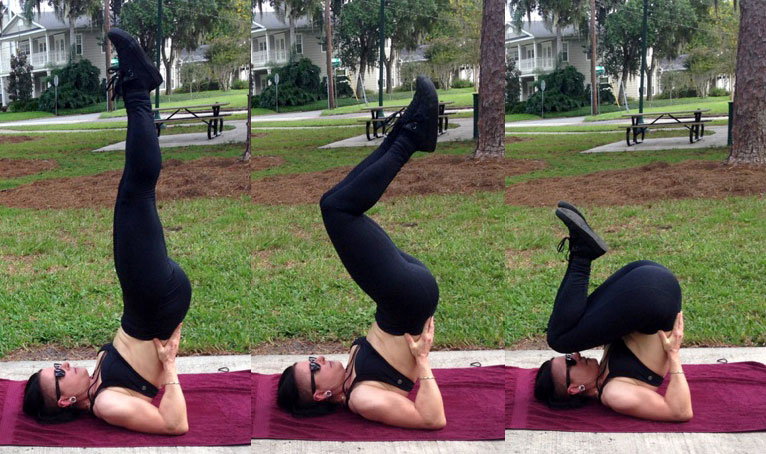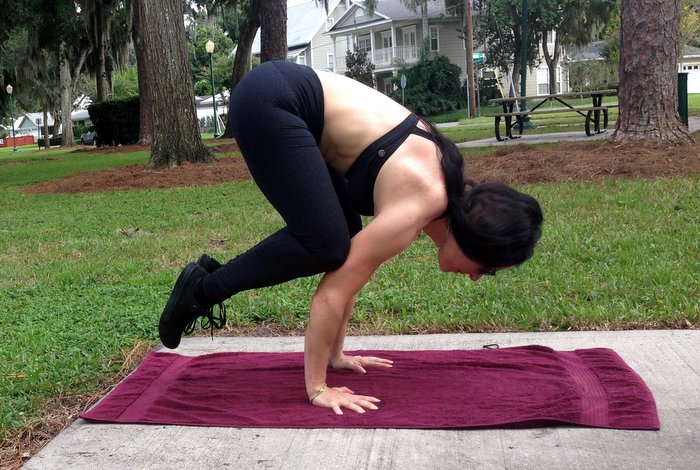
Over the past few weeks, I’ve been conducting a little experiment. Due to an intense work schedule, combined with not getting enough sleep, I found myself in a condition that was not optimal for intense workouts. So, I decided to revisit a few of the early steps of Coach Wade’s “Big Six.”
In Convict Conditioning, as well as at the PCC, the warm up for the work sets of our training can come from practicing earlier steps of the movements. For example, if our work sets consist of knocking out reps of full bridges, we would warm up for them with a few meaningful sets of short bridges or straight bridges (the first and second steps of the progression in Convict Conditioning).
The first step of the Convict Conditioning squat sequence is the shoulder stand squat. This step is outlined in the original Convict Conditioning book, but explained in a little more detail in the Convict Conditioning Ultimate Bodyweight Squat Course DVD and Manual. This move is controversial because for many beginners (especially those who are overweight), getting down on the floor, and essentially getting upside down, will present a big obstacle right away. Then, if they’ve managed to get into the shoulder stand, it can be difficult for some larger people to get into the end position simply because they may be in their own way. This can be a major obstacle and it really doesn’t take that much extra weight to cause either of these issues. So at the PCC, we teach some other beginner drills which are more easily applicable to people of all shapes, sizes, ages, and fitness levels.
However, I’d recently managed to mildly annoy—but not injure—my left knee. In general, I tend to err on the side of caution and will make no apologies for stopping an exercise or movement if I feel a certain type of discomfort. Over the years I think this attitude this has helped me remain uninjured even while doing a fair amount of intense training and advanced drills. Exercise should make us stronger, not screw us up!

Though accidents happen, avoiding injury during training should be a top priority. While we are all continually encouraged to “get outside our comfort zone,” part of our own individual fitness journeys should include learning to carefully monitor our physical selves. This of course will be different for everyone, and will change as we age. I’m not saying that we should be afraid of what we’re doing in the gym or in life, only that it’s a good idea to start paying attention to, and learning to understand the subtle signals from our bodies.
So I wondered what kind of benefits my annoyed left knee could gain from the shoulder stand squat—and if the unweighted movement might give me the chance to analyze what might have happened in the first place, or at the least identify some trouble spots. I also started to consider what some of the other beginner steps could bring to my other challenges and goals.
The following is what I did, at a reasonably slow speed, which took a lot of control:
Two rounds:
- Short bridges – 25 reps
- Shoulder stand squats – 25 reps
- Bar Hang – 1 minute
- Full bridge
- Plow stretch
The rep range in my example above was chosen since those were the Convict Conditioning “intermediate standards” for the short bridges and shoulder stand squats. This wasn’t meant to be an especially taxing workout, but I did find parts of it surprisingly challenging, in a way that indicated I might be working with my nervous system as much as my muscles. The above rep ranges are not necessarily appropriate for everyone, and will take some experimentation. When in doubt, do less on the first round to figure out where you stand (and where you stand on that particular day).

Intrigued by the CNS response of the above example, on a day following a very challenging kettlebell workout in the same week, I decided to make a different version but with the same general ideas:
First round :
- Short bridges – 25 reps
- Shoulder stand squats – 25 reps
- Crow stand – 1 minute
- Full bridge
- Plow stretch

Second round:
- Short bridges – 25 reps
- Shoulder stand squats – 25 reps
- Wall handstand – 1 minute
- Full bridge
- Plow stretch
I ended with Coach Wade’s “Trifecta” and some deep squats. Everything felt easier and better executed.
Going back to the more advanced drills the next day, I had a new confidence, and could tell that progress was made that week, just from the two small sessions with the earlier steps. Since then, I’ve made it a point to have more sessions like these during a typical week.
I encourage you to revisit earlier steps you have learned from Convict Conditioning and/or the PCC Workshop. Even if you feel like you’ve long-since outgrown them, they still hold their own challenges and can teach you a lot (especially if you go purposefully slow). For those of us who are instructors, they also help us stay sharp and empathize with our clients when explaining and working through those beginning progressions. Never underestimate the power of those early steps!
***
Adrienne Harvey, Senior PCC Instructor, RKC-II, CK-FMS, has been RKC Certified since 2010, and RKC Level 2 certified since 2011. Kettlebell and bodyweight training have been crucial in Adrienne’s personal quest for fitness. A core member of the PCC team, Adrienne loves sharing her knowledge with small groups and individuals. She also loves to develop recipes and workout programs to further support performance, body composition, and of course—FUN. Go to http://www.giryagirl.com for more information about Adrienne.